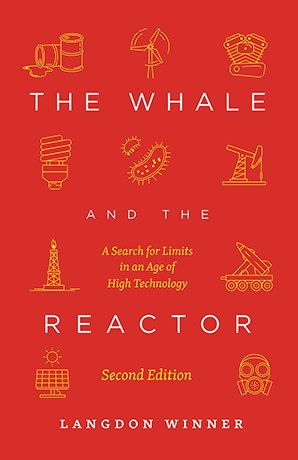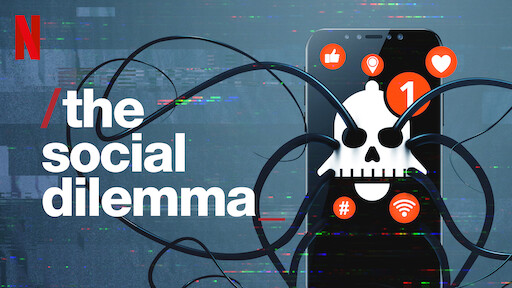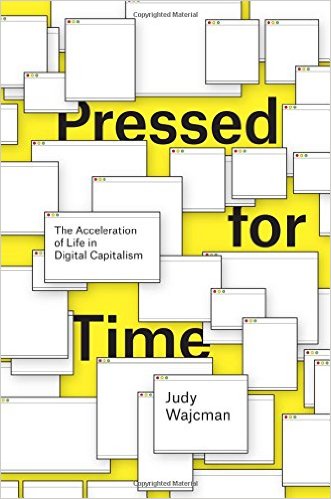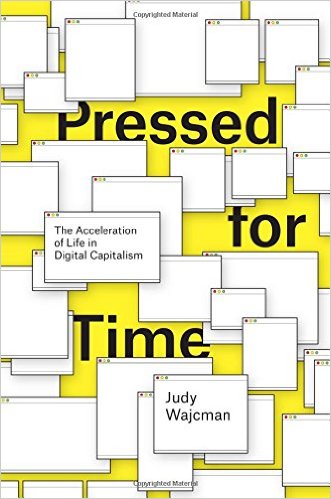a review of Langdon Winner, The Whale and the Reactor: A Search for Limits in an Age of High Technology, second edition (University of Chicago Press, 2020)
by Zachary Loeb
~
The announcement that Mark Zuckerberg and Priscilla Chan would be donating $300 million to help address some of the challenges COVID-19 poses for the 2020 elections was met with a great deal of derision. The scorn was not directed at the effort to recruit poll workers, or purchase PPE for them, but at the source from whence these funds were coming. Having profited massively from allowing COVID-19 misinformation to run rampant over Facebook, and having shirked responsibility as the platform exacerbated political tensions, the funding announcement came across not only as too little too late, but as a desperate publicity stunt. The incident was but another installment in Facebook’s tumult as the company (alongside its CEO/founder) continually finds itself cast as a villain. Facebook can take some solace in knowing that other tech companies—Google, Amazon, Uber—are also receiving increasingly negative attention, and yet it seems that for every one critical story about Amazon there are five harsh pieces about Facebook.
Where Facebook, and Zuckerberg, had once enjoyed laudatory coverage, with the platform being hailed as an ally of democracy, by 2020 it has become increasingly common to see Facebook (and Zuckerberg) treated as democracy’s gravediggers. Indeed, much of the animus found in the increasingly barbed responses to Facebook seem to be animated by a sense of betrayal. Many people, including more than a few journalists and scholars, had initially been taken in by Facebook’s promises of a more open and connected world, even if they are loathe to admit that they had ever fallen for that ruse now. Certainly, or so the shift in sentiment conveys, Facebook and Zuckerberg deserve to be angrily upbraided and treated with withering skepticism now… but who could have seen this coming?
“Technologies are not merely aids to human activity, but also powerful forces acting to reshape that activity and its meaning” (6). When those words were first published, in 1986, Mark Zuckerberg was around two years old, and yet those words provide a more concise explanation of Facebook than any Facebook press release or defensive public speech given by Zuckerberg. Granted, those words were not written specifically about Facebook (how could they have been?), but in order to express a key insight about the ways in which technologies impact the societies in which they are deployed. The point being not only to consider how technologies can have political implications, but to emphasize that technologies are themselves political. Or to put it slightly differently, Langdon Winner was warning about Facebook before there was a Facebook to warn about.
More than thirty years after its initial publication, The University of Chicago Press has released a new edition of Langdon Winner’s The Whale and the Reactor. Considering the frequency with which this book, particularly its second chapter “Do Artifacts Have Politics?,” is still cited today, it is hard to suggest that Winner’s book has been forgotten by scholars. And beyond the academy, those who have spent even a small amount of time reading some of the prominent recent STS or media studies works will have likely come across his name. Therefore, the publication of the this second edition—equipped with a new preface, afterword, an additional chapter, and a spiffy red cover—represents an important opportunity to revisit Winner’s work. While its citational staying power suggests that The Whale and the Reactor has become something of an essential touchstone for works on the politics of technological systems, the larger concerns coursing through the book have not lost any of their weight in the years since the book was published.
For at its core The Whale and the Reactor is not about the types of technologies we are making, but about the type of society we are making.
Divided into three sections, The Whale and the Reactor wastes no time in laying out its central intervention. Noting that technology had rarely been treated as a serious topic for philosophical inquiry, Winner sets about arguing that an examined life must examine the technological systems that sustain that life. That technology has so often been relegated to the background has given rise to a sort of “technological somnambulism” whereby many “willingly sleepwalk” as the world is technologically reconfigured around them (10). Moving forward in this dreamy state, the sleepers may have some vague awareness of the extent to which these technological systems are becoming interwoven into their daily lives, but by the time they awaken (supposing they ever do awaken) these systems have accumulated sufficient momentum as to make it seemingly impossible to turn them off at all. Though The Whale and the Reactor is not a treatise on somnambulism, this characterization is significant insofar as a sleepwalker is one who staggers through the world in a state of unawareness, and thus cannot be held truly responsible. Contrary to such fecklessness, the argument presented by Winner is that responsibility for the world being remade by technology is shared by all those who live in that world. Sleepwalking is not an acceptable excuse.
In what is almost certainly the best-known section of the book, Winner considers whether or not artifacts have politics—answering this question strongly in the affirmative. Couching his commentary in a recognition that “Scarcely a new invention comes along that someone doesn’t proclaim it as the salvation of a free society” (20), Winner highlights that social and economic forces leave clear markers on technologies, but he notes that the process works in the opposite direction as well. Two primary ways in which “artifacts can contain political priorities” (22) are explored: firstly, situations wherein a certain artifact is designed in such a way as to settle a particular larger issue; and secondly, technologies that are designed to function within, and reinforce, a certain variety of political organization. As an example of the first variety, Winner gives an example of mechanization at a nineteenth century reaper manufacturing plant, wherein the process of mechanization was pursued not to produce higher quality or less expensive products, but for the purposes of breaking the power of the factory’s union. While an example of the second sort of politics can be seen in the case of atomic weaponry (and nuclear power) wherein the very existence of these technologies necessitates complex organizations of control and secrecy. Though, of the two arguments, Winner frames the first example as presenting clearer proof, technologies of the latter case make a significant impact insofar as they tend to make “moral reasons other than those of practical necessity appear increasingly obsolete” (36) for the political governance of technological systems.
Inquiring as to the politics of a particular technology provides a means by which to ask questions about the broader society, specifically: what kind of social order gets reified by this technology? One of freedom and equality? One of control and disenfranchisement? Or one that distracts from the maintenance of the status quo by providing the majority with a share in technological abundance? It is easy to avoid answering such questions when you are sleepwalking, and as a result, “without anyone having explicitly chosen it, dependency upon highly centralized organizations has gradually become a dominant social form” (47). That this has not been “explicitly chosen” is partially a result of the dominance of a technologically optimistic viewpoint that has held to “a conviction that all technology—whatever its size, shape, or complexion—is inherently liberating” (50). Though this bright-eyed outlook is periodically challenged by an awareness of the ways that some technologies can create or exacerbate hazards, these dangers wind up being treated largely as hurdles that will be overcome by further technological progress. When all technologies are seen as “inherently liberating” a situation arises wherein “liberation” comes to be seen only in terms of what can be technologically delivered. Thus, the challenge is to ask “What forms of technology are compatible with the kind of society we want to build?” (52) rather than simply assume that we will be content in whatever world we sleepily wander into. Rather than trust that technology will be “inherently liberating,” Winner emphasizes that it is necessary to ask what kinds of technology will be “compatible with freedom, social justice, and other key political ends” (55), and to pursue those technologies.
Importantly, a variety of people and groups have been aware of the need to push for artifacts that more closely align with their political ideals, though these response have taken on a range of forms. Instead of seeing technology as deeply intertwined with political matters, some groups saw technology as a way of getting around political issues: why waste time organizing for political change when microcomputers and geodesic domes can allow you to build that alternative world here and now? In contrast to this consumeristic, individualistically oriented attitude (exemplified by works such as the Whole Earth Catalog), there were also efforts to ask broader political questions about the nature of technological systems such as the “appropriate technology” movement (which grew up around E.F. Schumacher’s Small is Beautiful). Yet such attempts appear already in the past, rearguard actions that were trying to meekly resist the increasing dominance of complex technical systems. As the long seventies shifted into the 1980s and increasing technological centralization became evident, such movements appear as romantic gestures towards the dream of decentralization. And though the longing for escape from centralized control persists, the direction “technological ‘progress’ has followed” is one in which “people find themselves dependent upon a great many large, complex systems whose centers are, for all practical purposes, beyond their power to influence” (94).
Perhaps no technology simultaneously demonstrates the tension between the dream of decentralization and growth of control quite like the computer. Written in the midst of what was being hailed as “the computer revolution” or the “information revolution” (98), The Whale and the Reactor bore witness to the exuberance with which the computer was greeted even as this revolution remained “conspicuously silent about its own ends” (102). Though it was not entirely clear what problem the computer was the solution to, there was still a clear sentiment that the computer had to be the solution to most problems. “Mythinformation” is the term Winner deploys to capture this “almost religious conviction that a widespread adoption of computers and communications systems along with easy access to electronic information will automatically produce a better world for human living” (105). Yet “mythinformation” performs technological politics in inverse order: instead of deciding on political goals and then seeking out the right technological forms for achieving those goals, it takes a technology (the computer) and then seeks to rearrange political problems in such a way as to make them appear as though they can be addressed by that technology. Thus, “computer romantics” hold to the view that “increasing access to information enhances democracy and equalizes social power” (108), less as a reflection of the way that political power works and more as a response to the fact that “increasing access to information” is one of the things that computers do well. Despite the equalizing hopes, earnest though they may have been, that were popular amongst the “computer romantics” the trends that were visible early in “the computer revolution” gave ample reason to believe that the main result would be “an increase in power by those who already had a great deal of power” (107). Indeed, contrary to the liberatory hopes that were pinned on “the computer revolution” the end result might be one wherein “confronted with omnipresent, all-seeing data banks, the populace may find passivity and compliance the safest route, avoiding activities that once represented political liberty” (115).
Considering the overwhelming social forces working in favor of unimpeded technological progress, there are nevertheless a few factors that have been legitimated as reasons for arguing for limits. While there is a long trajectory of theorists and thinkers who have mulled over the matter of ecological despoilment, and while environmental degradation is a serious concern, “the state of nature” represents a fraught way to consider technological matters. For some, the environment has become little more than standing reserve to be exploited, while others have formed an almost mystical attachment to an imagination of pristine nature; in this context “ideas about things natural must be examined and criticized” as well (137). Related to environmental matters are concerns that take as their catchword “risk,” and which attempt to reframe the discussion away from hopes and towards potential dangers. Yet, in addition to cultural norms that praise certain kinds of “risk-taking,” a focus on risk assessment tends to frame situations in terms of tradeoffs wherein one must balance dangers against potential benefits—with the result being that the recontextualized benefit is generally perceived as being worth it. If the environment and risk are unsatisfactory ways to push for limits, so too has become the very notion of “human values” which “acts like a lawn mower that cuts flat whole fields of meaning and leaves them characterless” (158).
In what had originally been The Whale and the Reactor’s last chapter, Winner brought himself fully into the discussion—recalling how it was that he came to be fascinated with these issues, and commenting on the unsettling juxtaposition he felt while seeing a whale swimming not far from the nuclear reactor at Diablo Canyon. It is a chapter that critiques the attitude towards technology, that Winner saw in many of his fellow citizens, as being one of people having “gotten used to having the benefits of technological conveniences without expecting to pay the costs” (171). This sentiment is still fully on display more than thirty years later, as Winner shifts his commentary (in a new chapter for this second edition) to the age of Facebook and the Trump Presidency. Treating the techno-utopian promises that had surrounded the early Internet as another instance of technology being seen as “inherently liberating,” Winner does not seem particularly surprised by the way that the Internet and social media are revealing that they “could become a seedbed for concentrated, ultimately authoritarian power” (189). In response to the “abuses of online power,” and beneath all of the glitz and liberating terminology that is affixed to the Internet, “it is still the concerns of consumerism and techno-narcissism that are emphasized above all” (195). Though the Internet had been hailed as a breakthrough, it has wound up leading primarily to breakdown.
Near the book’s outset, Winner observes how “In debates about technology, society, and the environment, an extremely narrow range of concepts typically defines the realm of acceptable discussion” (xii), and it is those concepts that he wrestles with over the course of The Whale and the Reactor. And the point that Winner returns to throughout the volume is that technological choices—whether they are the result of active choice or a result of our “technological somnambulism”—are not just about technology. Rather, “What appear to be merely instrumental choices are better seen as choices about the form of social and political life a society builds, choices about the kinds of people we want to become” (52).
Or, to put it a slightly different way, if we are going to talk about the type of technology we want, we first need to talk about the type of society we want, whether the year is 1986 or 2020.
*
Langdon Winner began his foreword to the 2010 edition of Lewis Mumford’s Technics and Civilization with the comment that “Anyone who studies the human dimensions of technological change must eventually come to terms with Lewis Mumford.” And it may be fair to note, in a similar vein, that anyone who studies the political dimensions of technological change must eventually come to terms with Langdon Winner. The staying power of The Whale and the Reactor is something which Winner acknowledges with a note of slightly self-deprecating humor, in the foreword to the book’s second edition, where he comments “At times, it seems my once bizarre heresy has finally become a weary truism” (vii).
Indeed, to claim in 2020 that artifacts have politics is not to make a particularly radical statement. That statement has been affirmed enough times as to hardly make it a question that needs to be relitigated. Yet the second edition of The Whale and the Reactor is not a victory lap wherein Winner crows that he was right, nor is it the ashen lamentation of a Cassandra glumly observing that what they feared has transpired. Insofar as The Whale and the Reactor deserves this second edition, and to be clear it absolutely deserves this second edition, it is because the central concerns animating the book remain just as vital today.
While the second edition contains a smattering of new material, the vast majority of the book remains as it originally was. As a result the book undergoes that strange kind of alchemy whereby a secondary source slowly transforms into a primary source—insofar as The Whale and the Reactor can now be treated as a document showing how, at least some, scholars were making sense of “the computer revolution” while in the midst of it. The book’s first third, which contains the “Do Artifacts Have Politics?” chapter, has certainly aged the best and the expansiveness with which Winner addresses the question of politics and technology makes it clear why those early chapters remain so widely read, while ensuring that these chapters have a certain timeless quality to them. However, as the book shifts into its exploration of “Technology: Reform and Revolution” the book does reveal its age. Read today, the commentary on “appropriate technology” comes across more as a reminder of a historical curio than as an exploration of the shortcomings of an experiment that recently failed. It feels somewhat odd to read Winner’s comments on “the state of nature,” bereft as they are of any real mention of climate change. And though Winner could have written in 1986 that technology was frequently overlooked as a topic deserving of philosophical scrutiny, today there are many works responding to that earlier lack (and many of those works even cite Winner). While Winner certainly cannot be faulted for not seeing the future, what makes some of these chapters feel particularly dated is that in many other places Winner excelled so remarkably at seeing the future.
The chapter on “Mythinformation” stands as an excellent critical snapshot of the mid-80s enthusiasm that surrounded “the computer revolution,” with Winner skillfully noting how the utopian hopes surrounding computers were just the latest in the well-worn pattern wherein every new technology is seen as “inherently liberating.” In writing on computers, Winner does important work in separating the basics of what these machines literally can do, from the sorts of far-flung hopes that their advocates attached to them. After questioning whether the issues facing society are genuinely ones that boil down to access to information, Winner noted that it was more than likely that the real impact of computers would be to help those in control stay in control. As he puts it, “if there is to be a computer revolution, the best guess is that it will have a distinctively conservative character” (107) .In 1986, it may have been necessary to speak of this in terms of a “best guess,” and such comments may have met with angry responses from a host of directions, but in 2020 it seems fairly clear that Winner’s sense of what the impact of computers would be was not wrong.
Considering the directions that widespread computerization would push societies, Winner hypothesized that it could lead to a breakdown in certain kinds of in-person contact and make it so that people would “become even more susceptible to the influence of employers, news media, advertisers, and national political leaders” (116). And moving to the present, in the second edition’s new chapter, Winner observes that despite the shiny toys of the Internet the result has been one wherein people “yield unthinkingly to various kinds of encoded manipulation (especially political manipulation), varieties of misinformation, computational propaganda, and political malware” (187). It is not that The Whale and the Reactor comes out to openly declare “don’t tell me that you weren’t warned,” but there is something about the second edition being published now, that feels like a pointed reminder. As former techno-optimists rebrand as techno-skeptics, the second edition is a reminder that some people knew to be wary from the beginning. Some may anxiously bristle as the CEOs of tech giants testify before Congress, some may feel a deep sense of disappointment every time they see yet another story about Facebook’s malfeasance, but The Whale and the Reactor is a reminder that these problems could have been anticipated. If we are unwilling to truly confront the politics of technologies when those technologies are new, we may find ourselves struggling to deal with the political impacts of those technologies once they have wreaked havoc.
Beyond its classic posing of the important “do artifacts have politics?” question, the present collision between technology and politics helps draw attention to a deeper matter running through The Whale and the Reactor. Namely, that the book keeps coming back to the idea of democracy. Indeed, The Whale and the Reactor shows a refreshingly stubborn commitment to this idea. Technology clearly matters in the book, and technologies are taken very seriously throughout the book, but Winner keeps returning to democracy. In commenting on the ways in which artifacts have politics, the examples that Winner explores are largely ones wherein technological systems are put in place that entrench the political authority of a powerful minority, or which require the development of regimes that exceed democratic control. For Winner, democracy (and being a participant in a democracy) is an active process, one that cannot be replaced by “passive monitoring of electronic news and information” which “allows citizens to feel involved while dampening the desire to take an active part” (111). Insofar as “the vitality of democratic politics depends upon people’s willingness to act together in pursuit of their common ends” (111), a host of technological systems have been put in place that seem to have simultaneously sapped “people’s willingness” while also breaking down a sense of “common ends.” And though the Internet may trigger some nostalgic memory of active democracy, it is only a “pseudopublic realm” wherein the absence of the real conditions of democracy “helps generate wave after wave of toxic discourse along with distressing patterns of oligarchical rule, incipient authoritarianism, and governance by phonies and confidence men” (192).
Those who remain committed to arguing for the liberatory potential of computers and the Internet, a group which includes individuals from a range of perspectives, might justifiably push back against Winner by critiquing the vision of democracy he celebrates. After all, there is something rather romantic about Winner’s evocations of New England townhall meetings and his comments on the virtues of face-to-face encounters. Do all participants in such encounters truly get to participate equally? Are such situations even set up so that all people can participate equally? What sorts of people and what modes of participation are privileged by such a model of democracy? Is a New England townhall meeting really a model for twenty-first century democracy? Here it is easy to picture Winner responding that what such questions reveal is the need to create technologies that will address those problems—and where a split may then open up is around the question of whether or not computers and the Internet represent such tools. That “technologies are not merely aids to human activity, but also powerful forces acting to reshape that activity and its meaning” (6) opens up a space in which different technologies can be built, even as other technologies can be dismantled, but such a recognition forces us to look critically at our technologies and truly confront the type of world that we are making and reinforcing for each other. And, in terms of computers and the Internet, the question that The Whale and the Reactor forces to the fore is one of: which are we putting first, computers or democracy?
Winner warned his readers of the dangers of “technological somnambulism,” but it unfortunately seems that his call was not sufficient to wake up the sleepers in his midst in the 1980s. Alas, that The Whale and the Reactor remains so strikingly relevant is partially a testament to the persistence of the sleepwalkers’ continual slouch into the future. And though there may be some hopeful signs of late that more and more people are groggily stirring and rubbing the slumber from their eyes—the resistance to facial recognition is certainly a hopeful sign—a danger persists that many will conclude that since they have reached this spot that they must figure out some way to justify being here. After all, few want to admit that they have been sleepwalking. What makes The Whale and the Reactor worth revisiting today is not only that Winner asks the question “do artifacts have politics?” but the way in which, in responding to this question, he is willing to note that there are some artifacts that have bad politics. That there are some artifacts that do not align with our political goals and values. And what’s more, that when we are confronted with such artifacts, we do not need to pretend that they are our friends just because they have rearranged our society in such a way that we have no choice but to use them.
In the foreword to the first edition of The Whale and the Reactor, Winner noted “In an age in which the inexhaustible power of scientific technology makes all things possible, it remains to be seen where we will draw the line, where we will be able to say, here are the possibilities that wisdom suggests we avoid” (xiii). For better, or quite likely for worse, that still remains to be seen today.
_____
Zachary Loeb earned his MSIS from the University of Texas at Austin, an MA from the Media, Culture, and Communications department at NYU, and is currently a PhD candidate in the History and Sociology of Science department at the University of Pennsylvania. Loeb works at the intersection of the history of technology and disaster studies, and his research focusses on the ways that complex technological systems amplify risk, as well as the history of technological doom-saying. He is working on a dissertation on Y2K. Loeb writes at the blog Librarianshipwreck, and is a frequent contributor to The b2 Review Digital Studies section.



 a review of Jussi Parikka, A Geology of Media (University of Minnesota Press, 2015) and The Anthrobscene (University of Minnesota Press, 2015)
a review of Jussi Parikka, A Geology of Media (University of Minnesota Press, 2015) and The Anthrobscene (University of Minnesota Press, 2015)
